#luang prabang
Text

Instagram @chrsschlkx
337 notes
·
View notes
Text
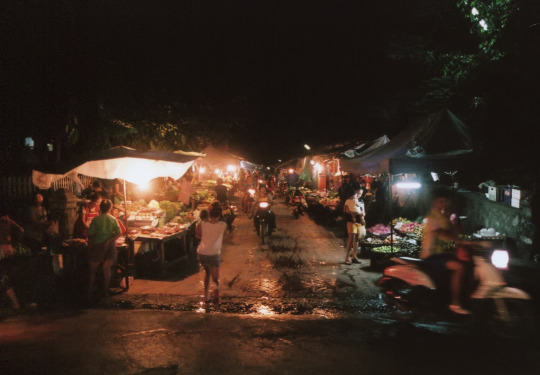
Gallery
#photography#original photographers#photographer on tumblr#35mm film#film photography#travel photography#laos#luang prabang#night market#street photography
47 notes
·
View notes
Text

Luang Prabang, 2023
#photography#Street Photography#Travel Photography#film photography#35mm film#asia#streetlife#film#film camera#filmisnotdead#filmcommunity#filmshooters#travel#luang prabang#laos
73 notes
·
View notes
Text

Priest of the Wat May temple in Luang Prabang, Laos
French vintage postcard, mailed in 1900 to Le Havre, France
#vintage#tarjeta#france#briefkaart#havre#postcard#le havre#photography#prabang#temple#postal#carte postale#1900#sepia#ephemera#historic#luang prabang#ansichtskarte#french#priest#laos#postkarte#luang#postkaart#mailed#photo
4 notes
·
View notes
Text
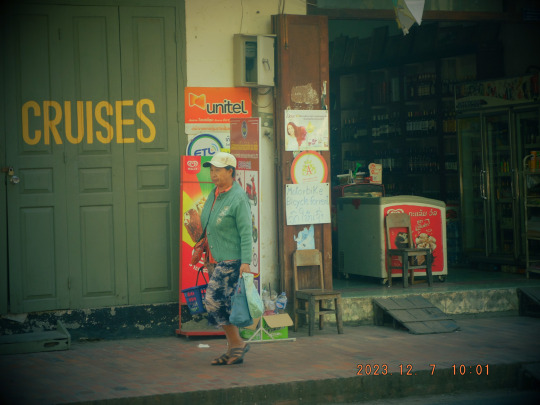
Morning walk // Luang Prabang, Laos // December 2023
#luang prabang#laos#southeast asia#asia#travel#photography#street photography#walking#fujifilm#community
2 notes
·
View notes
Text




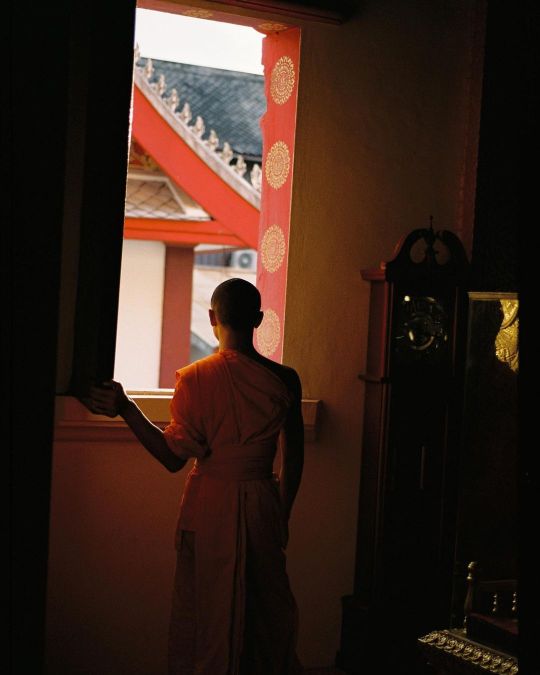
Alms giving tradition at the break of dawn in Luang Prabang last September. Every day, locals will prepare food (mostly sticky rice) for the hundreds of monks marching from the different temples around the town at 6am. 🍚
Pia Riverola
24 notes
·
View notes
Text

Luang Prabang, Laos, 2017 photo by me@gwenllian-in-the-abbey
Haven't posted any photography in awhile! This is an old one, taken in one of my favorite cities. My dad and I drove from Kunming to Luang Prabang (well, I drove, he white knuckled through the hairpin turns in the mountain passes) the year before we moved back to the states.
6 notes
·
View notes
Link
Luang Prabang was named a UNESCO world heritage site for its well-preserved French colonial architecture, but its true charms spring from the Lao culture. The streets are filled with Saffron-robed monks, local handicrafts, Buddhist temples, and hawker stalls selling river fish and sticky rice. Visitors flock to the old town's famous Sai Bat almsgiving—a daily tradition unbroken for hundreds of years, but those who go wandering after the ceremony might discover a new tradition a short walk away—the seasonal bamboo bridges across the Nam Khan River.
The Nam Khan winds through Luang Prabang before joining the wide Mekong, and during the rainy season residents and visitors use shuttle boats or the Old French Bridge to cross the swollen river. But when the dry season comes along, quicker and more charming options arise—two narrow bamboo bridges. In 2006, a local family erected the twin bridges for the first time and they've kept the practice going every November since. Although the bridges are designed primarily for tourist use, the construction is very traditional. Each bridge is made entirely of bamboo and rope (except for the lights), and though they might look (and feel) wobbly, they’re actually quite strong. They rely on bamboo’s natural strength and building techniques employed by Laos for generations. The bridges span the Nam Kahn until rainy season, when they are dismantled until the next year.
The larger bridge, set at the picturesque bend of the Nam Khan just as it reaches the Mekong, connects Luang Prabang with two villages noted for their artisans—the weaver’s village of Ban Xieng Lek and the paper-making village of Ban Xiang Khong.
The smaller bridge is slightly upstream and connects the old city to the newer side of town, as well as to restaurants and craft shops overlooking the river. This side arguably has the best view; visitors who take the bridge to the Dyen Sabai restaurant at sunset are in for a beautiful view of the fleeting bamboo structure.
18 notes
·
View notes
Text
Day Twenty-One, Part One: A Day of Wats and Wandering
The description for today on my itinerary reads, “Free time to wander around and free visits. Overnight in Luang Prabang.” Now, as a lifelong overthinker, my natural response to a statement like this is, “Wander around? Where? And how will I know when I’ve wandered enough? How many free visits does one make?” It’s the typical Paradox of Choice. Having too many options, I tend to freeze. For example, the first time I ever went to the DeKalb Farmers Market outside Atlanta, I emerged empty-handed because, seriously, how do you know which of the 396 varieties of green beans to buy? And, after last night’s story, I’m loath to buy beans at the market now anyway.
So, today’s dilemma was: Should I stay in Luang Prabang or go to the Pak Ou Caves? Should I take the bullet train to Vientiane or, as Pindar suggests, “Seek nearer home.”
In the end, inertia made the choice for me, as inertia is wont to do. I slept in late, having gotten up early for the alms ceremony the day before and then having gone back into town for the Garavek Story Telling Show. That meant that it was too late to go to the Pak Ou Caves or Vientiane, each of which would’ve required an early start. So, after a late-ish breakfast, I read the guidebook, chose a few destinations, and took the hotel shuttle to the center of Luang Prabang, and began my own personal Great Wat Tour.
The town of Luang Prabang is about the size of Statesboro, Georgia, where I spent eleven happy years in the 1990s. Actually, the comparison to Statesboro is not at all a bad one. If you simply replace every church of any denomination in Statesboro with a wat (i.e., a temple, a monastery, or a combination of the two) here, you’d end up with much the same thing. I’ll spare you photos of every single wat I took pictures of today (suffice it to say, there were lots), and just give you the Reader's Digest version. Even having just been there, they do start to look a bit “samey” in snapshots. And, if you haven’t been there in person, I doubt it’s easy all to tell one from another. But here are a select few.
I’ll start with the Wat Mahathat (“The Temple of the Large Stupa”) mostly because, while I was there, one of the novices dashed out and rang this large bell to signal that it was time for chanting to begin.
The bell also serves as something of a town clock. You can always tell what time of day it is in Luang Prabang by whichever bell is being sounded in whichever monastery. Even more impressive than the bell is a massive drum that’s hung nearby and played on certain festive occasions.
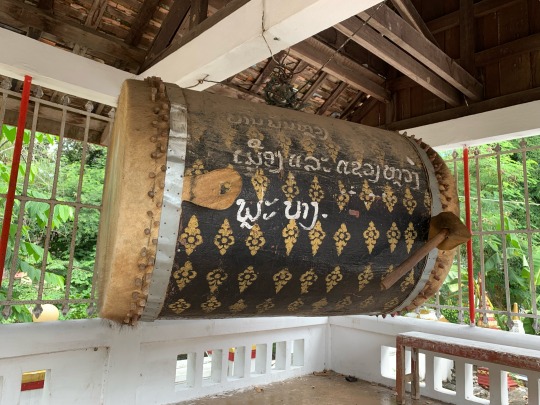
The large stupa that gives the wat its name can be seen in upper left of this picture. I photographed it almost accidentally since my attention was really drawn to the beautiful, but far less significant golden stupa to the right.

The temple building is quite ornate and, y my eye, very Laotian in style.

A long row of spirit houses lines the rear of the property.
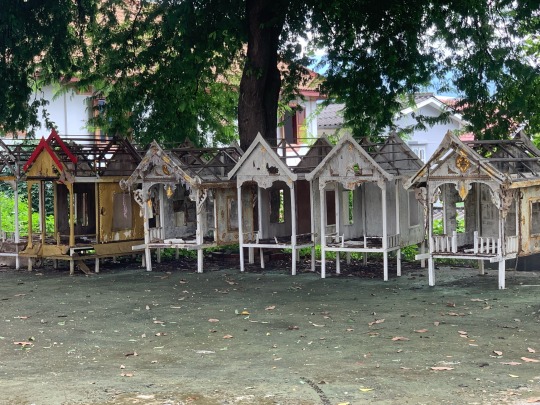
Some of the senior monks are given residences that almost look like tourist cabins.

The steps leaving the wat were littered with frangipani blossoms, a flower that has become a national symbol for Laos.

Since the Laotian word for frangipani is champa, and I’d just come from two countries where the Champa Kingdom was very important, this term can be confusing. In fact, however, the Laotian word champa has absolutely nothing to do with the Champa Kingdom. It’s just a linguistic coincidence.
Recalling that an early name for this territory was Lan Xang, “The Million Elephants Kingdom,” another common symbol is that of the elephant, which also appears nearly everywhere.

By the way, elephant trunks are a little like horseshoes in Southeast Asia. In depictions, they should always be raised, otherwise the luck “runs out.”
Even though I’d been to Wat Mai (“The New Monastery”) the other day, I knew I hadn’t seen everything that was there. So, in my free wandering today, I returned to Wat Mai and saw a building that served as a classroom for instruction in the tenets of Buddhism.
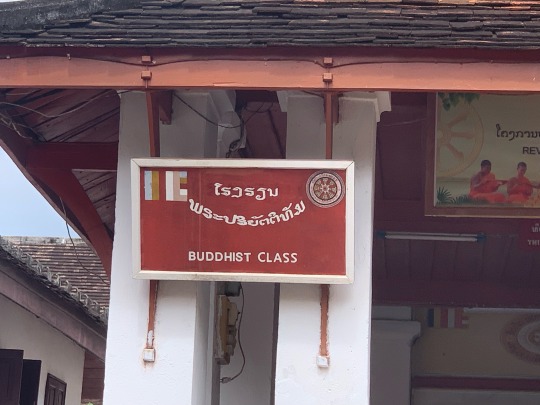
2 notes
·
View notes
Text
Laos 2009
Found some old pictures that were miraculously saved on a defunct website.






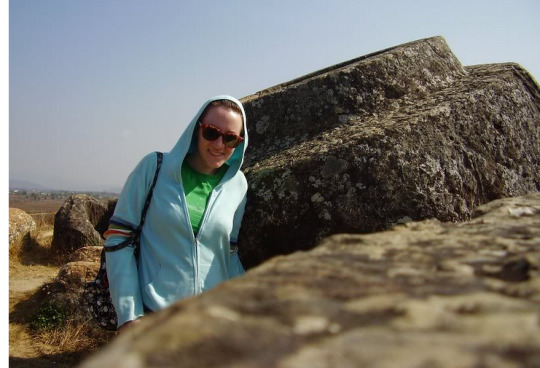

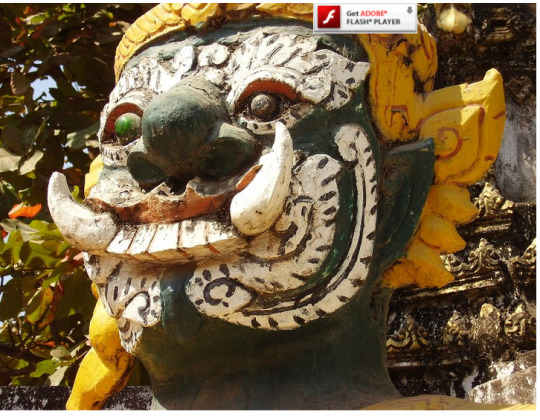
2 notes
·
View notes
Photo
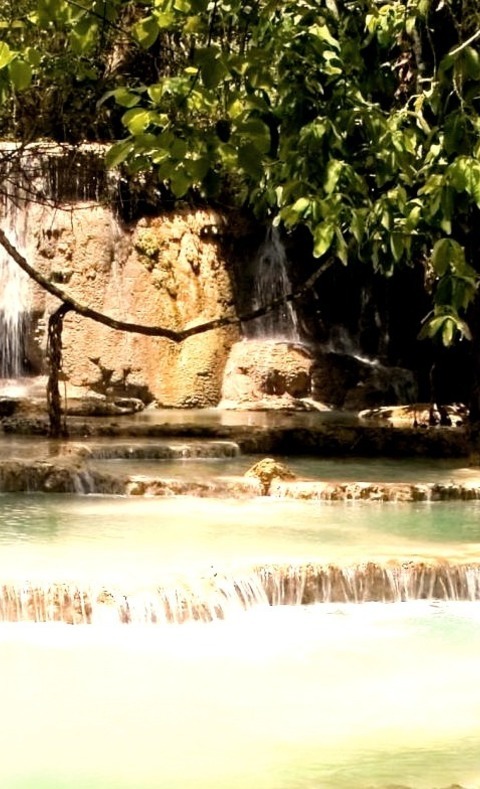
Tat Kuang Si Waterfalls south of Luang Prabang in Laos
3 notes
·
View notes
Photo
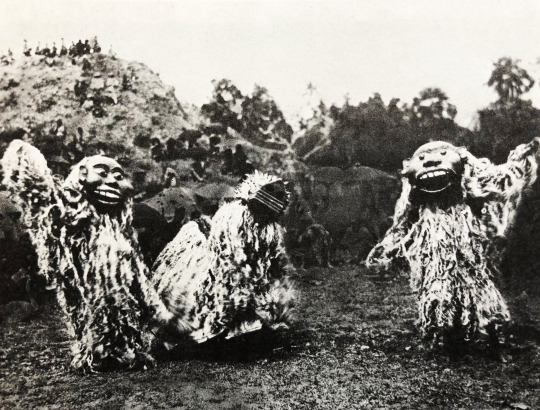
Vintage postcard of the annual Dance of Laos' legendary ancestors, Luang Prabang, Laos.
2 notes
·
View notes
Text

Luang Prabang, 2023
#photography#Street Photography#Travel Photography#film photography#35mm film#asia#streetlife#film#film camera#filmisnotdead#filmcommunity#filmshooters#travel#luang prabang#laos
43 notes
·
View notes
Text

Dancers in Luang Prabang, Laos
French vintage postcard
#vintage#tarjeta#briefkaart#postcard#photography#prabang#postal#carte postale#sepia#ephemera#dancers#historic#luang prabang#ansichtskarte#french#laos#postkarte#luang#postkaart#photo
3 notes
·
View notes
Photo
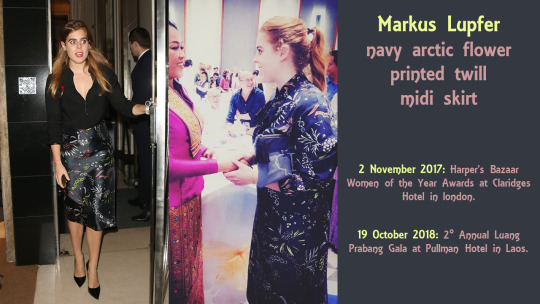
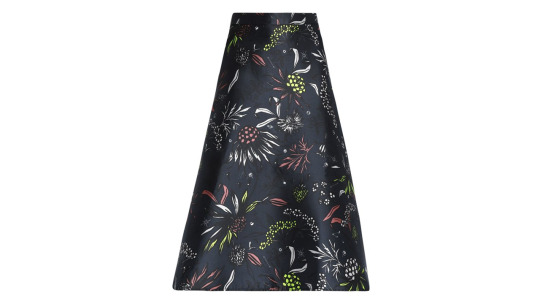
A Royal Recycling (part 90)
Markus Lupfer
#princess beatrice#beatrice of york#princess beatrice of york#beatrice#beatricepast#my edit#a royal recycling#royal recycling#markus lupfer#skirt#2017#2018#laos#gala#uk#london#claridges hotel#harper bazaar#luang prabang#british royal family#royal fashion#royals#fashion#style
3 notes
·
View notes
Photo
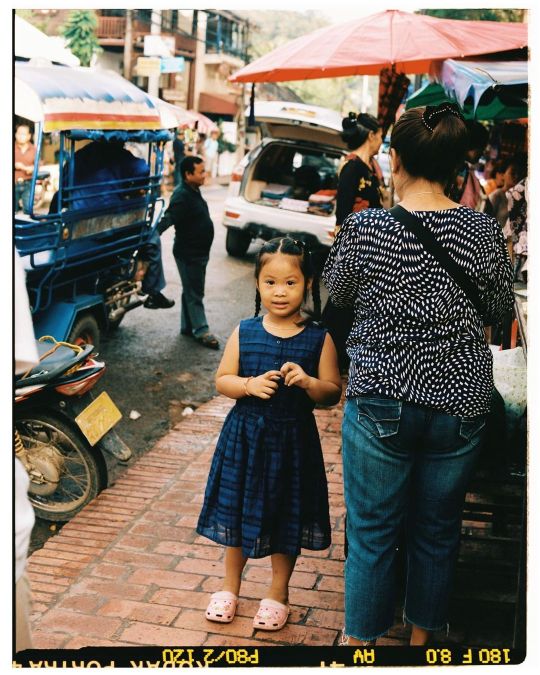
Luang Prabang, Laos
Pia Riverola
19 notes
·
View notes